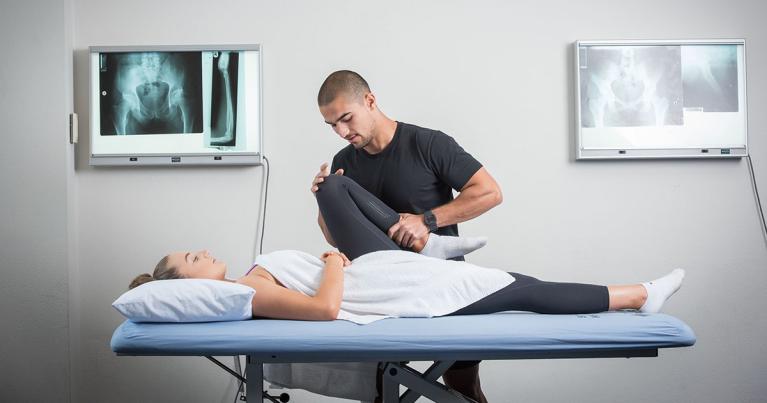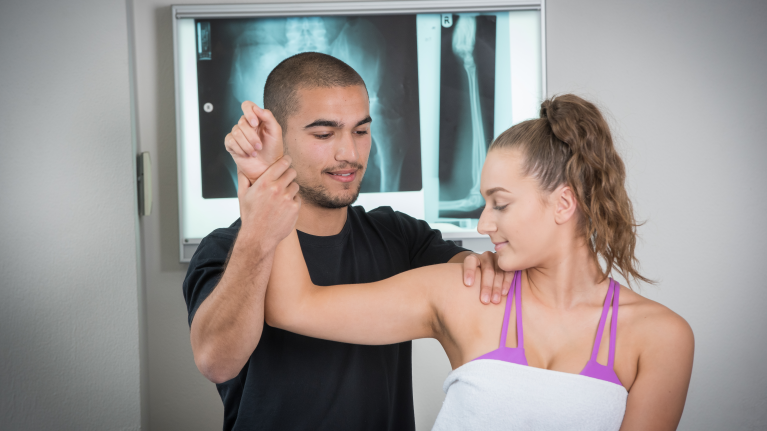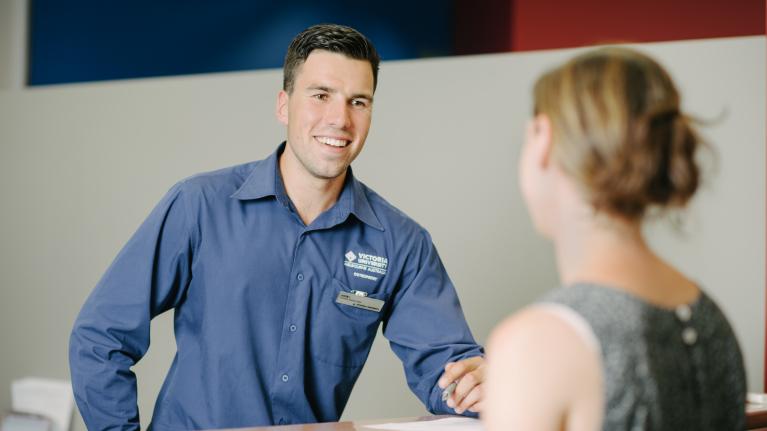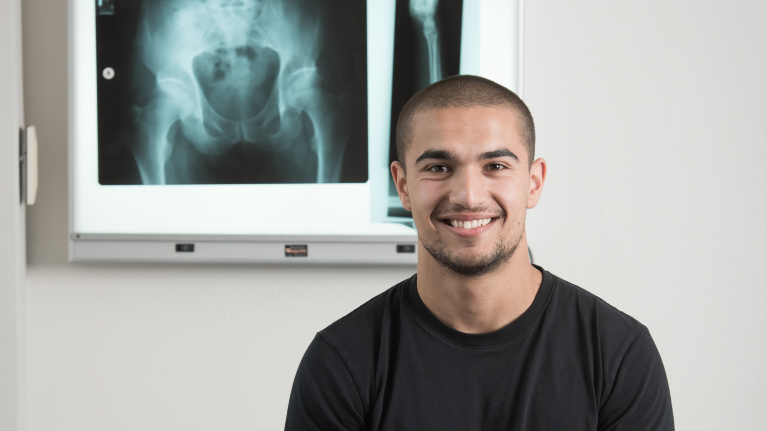More than the bare bones: What a career as an osteopath is really like
It’s likely you’ve had muscular, joint or skeletal problems at some point – maybe a sporting injury, or perhaps your back locks into place after a long week of studying at your desk.
Common enough complaints, but how much do you know about the people who can remedy them?
Read on to find out more about osteopaths, their industry, and how you can begin a rewarding career in osteopathy.

What is an osteopath?
Osteopaths provide their patients with diagnosis, care, and treatment of complaints related to the musculoskeletal system. Taking a holistic approach to bodily health, they apply their knowledge of the body's systems and their interactions to target pain, discomfort or health conditions.
Rather than “just bones”, osteopaths focus on the entire body: the soft tissues, the spine and nervous system, and the other systems such as circulatory, gastrointestinal or lymphatic, which can often feel referred effects from injuries or other conditions.

What's a day in the life like?
As an osteopath, you're likely to work in a clinical setting, such as an osteopathy practice or a hospital. Other possibilities include community centres, and rehab or sports-medicine organisations. Consultancy roles are common too, especially in sports-related fields.
Treating a wide and varied range of ailments, you could see patients with any of the following common musculoskeletal conditions:
- general neck or back pain
- disc bulges
- scoliosis
- arthritis
- sciatica
- repetitive strain injuries
- sports injuries
- postural problems
- discomfort or pain due to pregnancy
- tendonitis
- plantar fasciitis.
As well as the above, it’s likely you’ll deal with a range of conditions that aren’t joint or tissue related, but involve other systems that play a role in our body’s health and healing processes. These might include:
- chronic or repetitive headaches
- neuralgia
- vertigo
- digestive or gastrointestinal issues.
Osteopaths employ many different manual techniques in their treatments. You might find yourself carrying out soft-tissue stretching and massage, spinal mobilisation and manipulation, joint articulation, or muscle resistance exercises.
As well as physical treatment, a large part of the job is communicating with your patients. You would take a case history to ensure that you know enough about your patient's background and daily life to shape your treatment, and come up with a tailored treatment plan.
This might include informing them about a diagnosis, detailing exercise or stretching techniques, health and lifestyle plans, a referral to another specialist or a recommendation for repeated treatment.
What's a day in the life like?

Is osteopathy for you?
If you’re wondering whether osteopathy might be for you, it’s worth considering whether you have the skills and strengths that you would need to succeed in the career path.
To be a good osteopath, you should have:
- an understanding of and interest in science
- natural communication skills
- a moderate degree of general fitness and strength
- the ability to gain client trust and put people at ease
- confidence in, and comfort with, physicality with others
- sensitivity to clients and their needs.

How to become an osteopath
In Australia, you will need to complete a bachelor degree in science as well as a masters degree to qualify as a registered osteopath.
VU offers this path through the Bachelor of Science (Osteopathy)/Master of Health Science (Osteopathy). This 4.5-year, dual-qualification course is one of only three dual programs accredited by the Australasian Osteopathic Accreditation Council (AOAC).
Once you’ve completed your masters degree, you’ll also need to make sure you have a current First Aid Certificate. Then, you’ll need to apply for Australian Health Practitioner Regulation Agency (AHPRA) registration – which you will need to renew every 12 months to continue practising.

Hands-on learning with clinical placements
As part of your course at VU, you’ll be able to put what you’ve learnt into practice with a clinical placement unit that lets you gain experience within the student osteopathy clinic at the VU City Tower.
Supervised by experienced osteopathy educators, you’ll treat members of the public or existing staff/students at VU in order to gain clinical workplace hours, and develop your confidence as a practitioner.
Jump in to begin your osteo journey now
Ready to take your first steps towards becoming a qualified osteopath? VU offers a dual-qualification course based at the VU City Tower – check out our osteopathy course now.